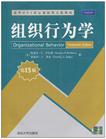组织行为学
出版时间:2010-11 出版社:清华大学出版社 作者:(美)罗宾斯,(美)贾奇 著 页数:738
前言
世纪之交,中国与世界的发展呈现最显著的两大趋势一以网络为代表的信息技术的突飞猛进,以及经济全球化的激烈挑战。无论是无远弗界的因特网,还是日益密切的政治、经济、文化等方面的国际合作,都标示着21世纪的中国是一个更加开放的中国,也面临着一个更加开放的世界。教育,特别是管理教育总是扮演着学习与合作的先行者的角色。改革开放以来,尤其是20世纪90年代之后,为了探寻中国国情与国际上一切优秀的管理教育思想、方法和手段的完美结合,.为了更好地培养高层次的“面向国际市场竞争、具备国际经营头脑”的管理者,我国的教育机构与美国、欧洲、澳洲以及亚洲一些国家和地区的大量的著名管理学院和顶尖跨国企业建立了长期密切的合作关系。以清华大学经济管理学院为例,2000年,学院顾问委员会成立,并于10月举行了第一次会议,2001年4月又举行了第二次会议。这个顾问委员会包括了世界上最大的一些跨国公司和中国几家顶尖企业的最高领导人,其阵容之大、层次之高,超过了世界上任何一所商学院。在这样高层次、多样化、重实效的管理教育国际合作中,教师和学生与国外的交流机会大幅度增加,越来越深刻地融入到全球性的教育、文化和思想观念的时代变革中,我们的管理教育工作者和经济管理学习者,更加真切地体验到这个世界正发生着深刻的变化,也更主动地探寻和把握着世界经济发展和跨国企业运作的脉搏。
内容概要
本书是由美国著名管理学家斯蒂芬·P.罗宾斯教授所撰写的经典教材,系统地覆盖了组织行为学领域的主要内容,从个体行为、群体行为、组织系统和组织动力等角度论述了管理中的人的行为问题,囊括了组织行为学研究的最新理论成果和实践经验总结。全书框架结构合理,体裁新颖,语言生动,在介绍理论的同时配以最新的案例,激发读者的兴趣。作者在每一章都设计了“是神话还是科学”、“新闻中的组织行为学”等专栏帮助读者理解概念和理论,还独具匠心地设计了对一个问题从正反两方面进行辩论的专栏。章后都有大量练习和案例,帮助读者深入掌握所学内容。 本书是一本不可多得的优秀教材,不仅适合工商管理专业的学生,也适合广大的管理工作者。
作者简介
斯蒂芬·P.罗宾斯(Stephen P.Robbins)美国圣迭戈州立大学荣誉教授,管理学与组织行为学领域全球最畅销教材的作者,其著作在全美超过1000家大学中广泛使用,并被翻译为16种语言。罗宾斯博士长期从事管理学和组织行为学研究.他撰写的教科书中最著名的有《管理学》、《管理学
书籍目录
序言 第1部分 导论 第1章 什么是组织行为学 第2部分 个体 第2章 个体行为的基础 第3章 态度和工作满意度 第4章 个性与价值观 第5章 知觉与个体决策 第6章 基本激励概念 第7章 激励:从概念到应用 第8章 情绪与心态 第3部分 群体 第9章 群体行为的基础 第10章 理解工作团队 第11章 沟通 第12章 领导的基本方法 第13章 当代的领导议题 第14章 权力与政治 第15章 冲突与谈判 第4部分 组织系统 第16章 组织结构的基础 第17章 组织文化 第18章 人力资源政策和实践 第5部分组织动态学 第19章 组织变革与压力管理 附录 组织行为学研究 综合案例
章节摘录
插图:Nonliving objects such as desks, machines, and buildings are subject to the lawsof nature, but they have no beliefs, motives, or intentions. People do. That'swhy when we observe people, we attempt to develop explanations of why theybehave in certain ways. Our perception and judgment of a person's actions,therefore, will be significantly influenced by the assumptions we make aboutthat person's internal state. Attribution theory tries to explain the ways in which we judge people dif-ferently, depending on the meaning we attribute to a given behavior.It sug-gests that when we observe an individual's behavior, we attempt to determinewhether it was internally or externally caused. That determination, however,depends largely on three factors: (1) distinctiveness, (2) consensus, and(3) consistency. First, let's clarify the differences between internal and exter-nal causation and then we'll elaborate on each of the three determiningfactors. Internally caused behaviors are those we believe to be under the personalcontrol of the individual. Externally caused behavior is what we imagine the situ-ation forced the individual to do. For example, if one of your employees is latefor work, you might attribute his lateness to his partying into the wee hours ofthe morning and then oversleeping. This is an internal attribution. But if youattribute his arriving late to an automobile accident that tied up traffic, thenyou are making an external attribution.Now let's discuss each of the three determining factors. Distinctiveness refersto whether an individual displays different behaviors in different situations. Isthe employee who arrives late today also the one coworkers say regularly "blowsoff" commitments? What we want to know is whether this behavior is unusual. Ifit is, we are likely to give it an external attribution. If it's not unusual, we willprobably judge the behavior to be internal.If everyone who faces a similar situation responds in the same way, we cansay the behavior shows consensus. The behavior of our tardy employee meets thiscriterion if all employees who took the same route to work were also late. Froman attribution perspective, if consensus is high, you would probably give anexternal attribution to the employee's tardiness, whereas if other employeeswho took the same route made it to work on time, you would attribute his late-ness to an internal cause.
编辑推荐
《组织行为学(第13版)》:清华MBA核心课程英文版教材
图书封面
评论、评分、阅读与下载
用户评论 (总计87条)
- 罗宾斯的《组织行为学》堪称经典,内容安排精当、重点突出,非常喜欢。
- 英文版组织行为学的经典,原汁原味,学习MBA的好书
- 组织行为学的经典教材~
- 很厚的一本书 纸张和印刷质量还不错吧 是入门管理学的基础教材 值!
- 语言生动,能激发读者的兴趣。赞一个!
- 优秀的工商管理教材。
- 丰富真实案例,结构编排紧凑且深合认知规律,形式内容都无可挑剔的一本非常务实的指导书!不愧是经典中的经典!
- 适合做大学教材,很好
- 英文版的书,可以一边重拾英语,一边掌握专业知识,一举两得。
- 学校要用的教科书,内容经典
- 英文原版书。案例很多,容易理解,影印书,超级好
- 这本书是英文的,如果有毅力的朋友不妨读一下原汁原味的外国书,风格与国内的教材大不相同,读后会受益很多,不只是英文水平的提高!
- It's great! 最特别的感觉就是书太厚了.
内容方面, 喜欢. - 这本书的内容和印刷都很好,近阶段刚好要用到,学习中。
- 当教材用,学校规定的
- 错过学校订教材 和同学一起订的 不错哈
- 这本书挺好的,用一个纸箱子封的好好的,挺新的,和想象中一样
- 这个商品不错,不过英文版的。是个挑战!
- 英文版的,正合我意
- 物流很快,好书,很有帮助
- 很不错的一本书,是领导推荐的。送货也很快,只不过运输过程中有些损害,不过还是不影响的。建议以后是否可以用硬点的包装,毕竟书在运输中很容易弄皱弄坏的。当当网,还会再光顾的。
- 书本不错,是按照书本翻译的
- 英文的 看起来有点慢 别的都不错 毕竟是纯正的 那些翻译的多少加进主观认为 推荐大家购买
- 书好厚阿,不错的一本书,内容很好
- 印刷、排版都不错,内容也可以
- 人力资源从事者的学习资料,不错的选择吧
- 一直用这本书,挺好,只是包装有待改进!
- 这本书是全英文的,因为采购时,自已的大意,买了看不懂,没想到当当的退货服务那么体贴,谢谢啦。会继续支持当当的。
- 还没开始看,大体翻了一下。全英文,但不是很难。
计划用半年的时间看完。
书送到的时候,没有损伤。这也跟买书的方式有关吧。只买了一本。
不会因为几本书的大小不同,而造成运输途中的损坏。 - 纸质太差!!!
- 很不错呀,已经读了多时
- 没读过。这次到的时候包装得比较好,没有出现破损情况。
- 纯英文,物流比较给力,包装完好!
- 全英文的,够看段时间了
- 全是英文,看不懂
- 和中文书一起买的,很匹配。
- 呵呵,书到手了,不过还没有看哟,不过到货时间还蛮快的,很满意
- 因为是上课用的,还没读过,不过很便宜
- 后来自己上网买勒
- 着急用,结果因为下点小雨就给推迟送货了
- 书很好,包装不错 寄到时没有出现损坏
- 英文,需要耐心慢慢看……
- 高估自己的能力了,只能慢慢啃了
- 即学习了人力资源相关知识,又复习的英语,一举两得。
- 不错的书,但是因为是全英文的,所以看得比较……纸张不错。
- 手机话费10元怎么还没有冲
- 经济管理研究生必备的图书
- 还没读,准备学习
- 老师一直用的书
- 如果在封面设计和用纸上能再考究点,将会是清华社的经典出版物
- 没读过,给学生买的。两本书已经脏了,不是很满意,但与书本身内容无关,对书很满意,快递也很满意。只是希望以后发货时可以坚持仔细些,所有书都有浮尘比较旧,但是这两个比较严重已经有水渍了,希望换货或者退货。
- 全英文教材
- 书籍很不错,有案例,也能学英语。
- 这书挺好的,值得一看,由于是英文版,看起来吃力一些,但将来一定会有很大收获
- 书,质量什么的应该可以的,就是英文版的,英文不好的小心。
- 纯英文版的,一起复习英语了
- 首先我不明白为什么有钻石VIP价,我是它的VIP会员却给的是普通价,这样子怎么让老顾客支持呢?书内容决定经典没的说价钱也比进口便宜的多多啦!纸张不太多作笔记效果不好
- 内容还行,就是纸质和版面没有人大版的好
- 书的纸张质量不太好,内容不错
- 在图书馆里看的,学英语学知识两不误
- 质量很好的一本书,已经买了好几次了
- 不错,挺好的,挺好的。
- 书挺新的!像是正版!
- 挺受益的,虽说是英文的,但是耐心看下去,获益很大。
- 质量挺好。满意
- 很不錯的一本書
- 信任当当的专业书。
- 讲了很多前沿趋势,挺有用的
- 居然是英文版,大意了
- 没有差,除了颜色是灰的以外,英文原书十三版
- 英文的书,这个价格还是不错了,虽然是黑白的。纸张一般,算比较薄吧。书整体挺好的,没有缺页脱页破损等等情况。很喜欢。希望一个月能看完。
- 发货很快。很经典的管理书籍,推荐
- 印刷以及紙張給人的感覺是質量不高,像是盜版的書籍。
- 到货快 但是保护的不好 买了两本一本 破损了两处 一本有褶皱
- 这个就不多说了,经典中的经典。
- 好难 还在睡觉中 哎 对懒人来说就是浪费了
- 还行哦。。。纸张什么的都还不错。
- 很好,价格实惠,内容全面
- 上课要用的课本,品相不错,比预计提早一天到货
- 买了,没怎么用,所以。。。。
- 进口翻译的,不错值得推荐
- 正版 清晰 内容丰富 好书
- 书运过来破破烂烂的,折角什么的就不说了,还都是灰。。。
- 书全是英文的 一点汉语没有 就是有点贵
- 为什么封面是中文内容是英文呀?
- 很喜欢书的排版结构,每页都是一半空白一半文字,方便写笔记~
- 这是一本管理方面的书。
本书给出了一个组织行为学模型,学工科的就把它理解成函数就行:输出(参数1,2,3...)=F(输入参数1,2,3...)。
因变量(输出值)包括:生产率、缺勤率、流失率等;
自变量(输入参数)分成三个层次,1)个体的变量,包括生理特征和认知、动机和能力等影响个人决策的因素;2)群体的变量,包括群体行为模式和群体成员之间相互吸引的程度;3)组织的变量,包括组织设计、组织内部文化和人力资源策略。
通过学习这个模型,管理者能够更有效的改善组织绩效。
